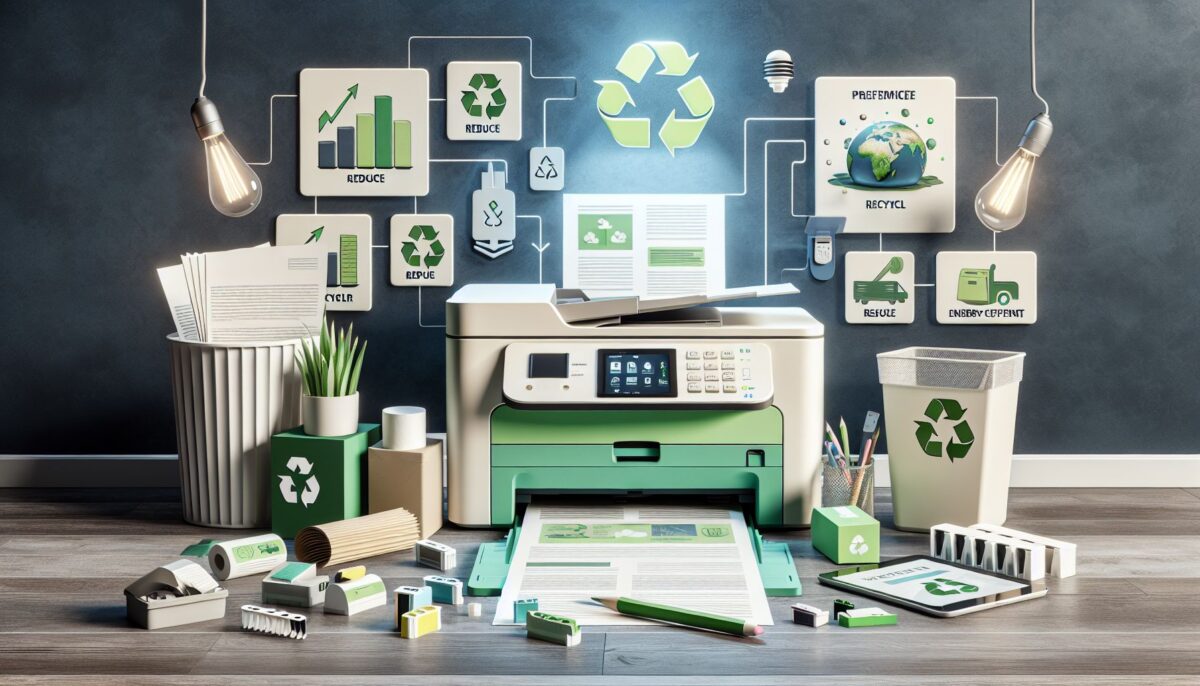In today’s world, sustainability is a hot topic. With the increasing concern over climate change and environmental degradation, businesses and individuals alike are looking for ways to reduce their impact on the planet. One area where this is particularly important is in the printing industry.
Printing has long been associated with paper consumption, ink usage, and waste generation. However, with advancements in technology and a growing awareness of environmental issues, there are now many ways to make printing more sustainable. In this article, we will explore some of the best practices for sustainable printing and how you can implement them in your own printing practices.
Introduction to Sustainable Printing
Sustainable printing is all about reducing the environmental impact of the printing process. This can include everything from choosing environmentally friendly materials to using energy-efficient equipment to reducing waste. By making small changes in the way we print, we can have a big impact on the environment.
One of the key considerations in sustainable printing is the choice of materials. Traditional printing materials, such as paper and ink, can be harmful to the environment. Paper production, for example, often involves deforestation and the use of harmful chemicals. Inks can contain toxic substances that can pollute waterways and harm wildlife. By opting for sustainable materials, such as recycled paper and vegetable-based inks, you can significantly reduce the environmental impact of your printing.
Another important aspect of sustainable printing is energy usage. Printing equipment can be energy-intensive, leading to high carbon emissions. By choosing energy-efficient printers and turning them off when not in use, you can reduce your energy consumption and lower your carbon footprint. Additionally, choosing to print double-sided and in black and white can further reduce energy usage.
Best Practices for Sustainable Printing
-
Choose Sustainable Materials: When possible, opt for recycled paper and vegetable-based inks. These materials are gentler on the environment and can help reduce waste and pollution.
-
Use Energy-Efficient Equipment: Look for printers that are Energy Star certified and have low energy consumption. Turn off printers when they are not in use to save energy.
-
Print Double-Sided: Printing on both sides of the paper can significantly reduce paper usage and waste. Set your printer to default to double-sided printing to make this a habit.
-
Go Digital: Whenever possible, opt for digital copies instead of physical prints. This can reduce paper usage and save resources.
-
Reuse and Recycle: Be sure to recycle any paper or ink cartridges that you do use. Additionally, consider reusing paper for drafts or internal documents before recycling.
-
Work with Eco-Friendly Suppliers: When choosing a printing company, look for one that is committed to sustainability. Check to see if they use recycled materials and eco-friendly practices.
Implementing Sustainable Printing in Your Business
As a business owner, there are many ways you can incorporate sustainable printing practices into your operations. Here are a few tips to get you started:
- Conduct a sustainability audit of your printing practices to identify areas for improvement.
- Educate your employees on the benefits of sustainable printing and encourage them to take part in your efforts.
- Partner with suppliers who share your commitment to sustainability and support eco-friendly practices.
- Monitor your progress and track key metrics, such as paper usage and energy consumption, to measure the impact of your sustainability initiatives.
By implementing these practices, you can reduce your environmental impact and contribute to a more sustainable future for our planet.
Conclusion
Sustainable printing is an important step towards reducing our impact on the environment. By choosing eco-friendly materials, using energy-efficient equipment, and implementing best practices, we can make a big difference in the sustainability of the printing industry. As individuals and businesses, we all have a role to play in protecting our planet for future generations. Let’s take action today to make our printing practices more sustainable and help build a brighter tomorrow.

